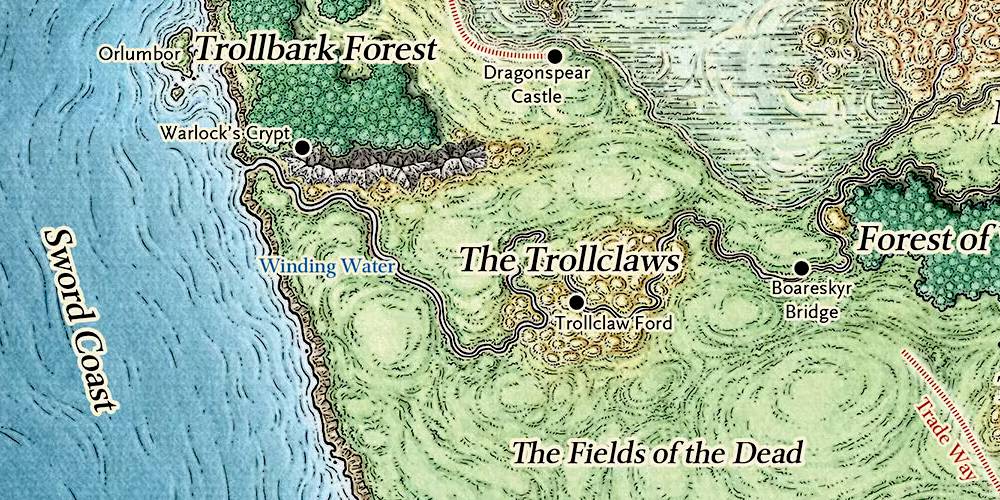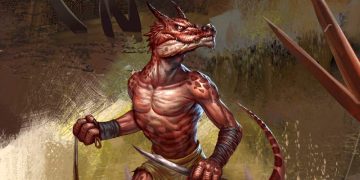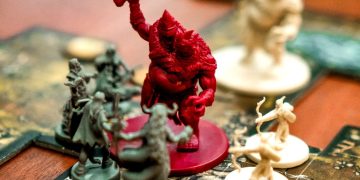In the infinite multiverse of Dungeons & Dragons, few settings have been the focus of as many stories as Forgotten Realms.
Whether it's the campaign setting used by players to build their own tales in, the setting for a novel series that influenced fantasy writers for decades, or the setting for multiple video games, the Forgotten Realms has always been one of the cornerstones of D&D lore.
There's a lot of Forgotten Realms lore out there to dig through. Here's everything you need to know about Forgotten Realms and why it's such an iconic Dungeons & Dragons campaign setting.
The Publication History of Forgotten Realms
What would eventually become Forgotten Realms was—like many other D&D campaign settings—the setting of one passionate DM.
Ed Greenwood created Forgotten Realms as a place for his players to explore, starting in places like Waterdeep and Shadowdale then slowly expanding outward from there.
Greenwood would eventually add more and more details to satisfy his party's thirst for knowledge about the setting, and in doing so, he introduced more characters and cities that made the world feel alive.
Starting in 1979, Greenwood began publishing his monsters and snippets of his lore in Dragon, one of the main D&D publications at the time.
Then, in 1986, TSR wanted to move beyond Gary Gygax's Greyhawk setting, so they approached Greenwood to help them flesh out his Forgotten Realms setting.
The first novel and campaign sourcebook were released in 1987, immediately becoming one of the most popular settings for the game.
For nearly four decades, there has been a steady stream of new lore, guides, and stories set in the Forgotten Realms, enough to keep eager DMs satisfied for multiple campaigns.
The Unique Features of Forgotten Realms
What is it that makes a story fit within Forgotten Realms rather than any of the other many Dungeons & Dragons campaign settings?
While Forgotten Realms has changed a lot during its nearly 40-year-long publication history, some things have remained consistent.
The Grand, Contrasting Locations
Forgotten Realms predominantly takes place on the continent of Faerun, where cities like Baldur's Gate, Waterdeep, and Neverwinter serve as focus points for many adventures.
Traveling between these cities is expensive and dangerous thanks to the untamed wilderness that surrounds them.
Beyond Faerun, there are multiple other continents in Forgotten Realms, with the most dangerous place for adventures being the Underdark. A cavernous world beneath the surface, it's home to some of the most iconic D&D creatures, including Beholders, Mind Flayers, and the Drow.
Entire civilizations have sprung up, never having seen the sun before and twisted by the darkness that they grew within.
The Huge Pantheon of Gods
Multiple gods and goddesses are always looking over Forgotten Realms, and their influence can be felt in nearly every corner of the world.
The world hinges on their whims, but they usually exert their power through their messengers.
While there have been multiple changes to the pantheon over the years, some of the more notable and iconic deities include:
- Bhaal, the god of murder.
- Helm, the god of protection.
- Kelemvor, the god of the dead.
- Selune, the goddess of the moon.
- Waukeen, the goddess of trade.
The Competing Factions
Part of what makes Forgotten Realms different from other D&D campaign settings is its use of factions within cities and nations.
Some factions aim to snuff out evil before it even has a chance to spread, while others work to further their own agendas and are known for backstabbing each other to get ahead.
Important factions in Forgotten Realms include:
Harpers. Viewed by many as meddlers and spies, Harpers are a loose organization of adventurers who operate independently to fight evil and corruption in their own—usually clandestine—way.
The Order of the Gauntlet. Some threats are too important to leave to subtlety, so the Order of the Gauntlet takes a direct approach. They believe that every evil—no matter how small—should be destroyed before it gets the chance to spread.
Emerald Enclave. While most members of this far-ranging group are Druids and Rangers, anyone who wishes to protect the natural world can join. The Emerald Enclave teaches its members both self-reliance and survival skills above all else.
Lords' Alliance. Backed by the wealthy and influential of Faerun, the Lords' Alliance serves as enforcers of the status quo and a source of stability for many smaller but important cities in Faerun.
The Memorable Characters
With dozens of novels, video games, and sourcebooks set in Forgotten Realms, it's no surprise that there have been so many important faces and names to come out of the setting.
If you spend enough time adventuring in Faerun, chances are you'll run into at least one or two of these legendary figures:
Elminster. One of the most powerful Forgotten Realms wizards, Elminster is an important force for good. He founded the Harpers and has played an important role in nearly every story and adventure told in Faerun, particularly in its early years.
Drizzt Do'Urden. A Drow who has come to the surface to fight evil, Drizzt is one of the most famous characters of all time from any D&D setting. He has been the main character of 34 novels and often shows up in video games as a notable NPC.
Minsc and Boo. First introduced in the Baldur's Gate RPG series, Minsc is a Human Ranger who, while boisterous and simple, is firmly dedicated to kicking evil in the backside. He's quick to befriend good people, but his closest companion is Boo, a "miniature giant space hamster" who accompanies him everywhere he goes.
Forgotten Realms in Other Media
Forgotten Realms isn't just confined to sourcebooks and adventure paths. It's been featured in some of the most famous Dungeons & Dragons media of all time.
This popularity and frequent use across video games, books, and movies is why Forgotten Realms is often seen as the default setting for Dungeons & Dragons, despite it being only one of many worlds.
Want to read, watch, or experience Forgotten Realms in media beyond Dungeons & Dragons campaigns? Check out the following:
- The Dark Elf Trilogy by R.A. Salvatore (novels)
- The Harpers Series by Various Authors (novels)
- Dungeons & Dragons: Honor Among Thieves (2023 film)
- The Best Dungeons & Dragons Video Games (video games)





